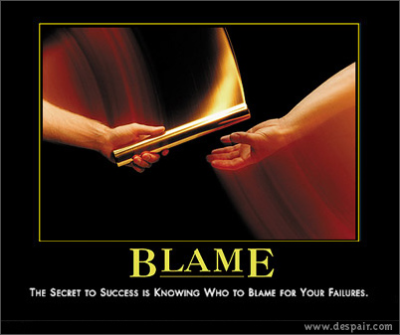Jason Fried, co-founder of the American software firm 37 Signals and co-author of ReWork: Change the Way You Work Forever, finds the language of that statement almost as inhuman as the problem that prompted it.
Not too long ago, Fried saw a similar, though less calamitous, disaster in a Chicago cafe. A woman had just purchased a large cup of coffee. On the way to sit down, she tripped, and spilled the entire contents all over another customer.
Here’s what she said: “I’m so sorry. I’m so, so sorry.”
“If someone is really, truly sorry,” says Fried, “that’s how they respond.”
But in business we rarely talk like that. Instead, we resort to a weird and inadvertent bilingualism. We speak human at home and “professionalese” at work. And that might be hurting our businesses more than we realise.
Go back to that all-too-common phrase: “We apologise for any inconvenience this might have caused.” Would you say that to your daughter when you were late picking her up from football practice? To your neighbour when your dog trampled his flowerbed?
“Any inconvenience” is emotionally anaemic and lacks the specificity to make it meaningful. “We apologise” isn’t much better. It’s distancing almost to the point of dismissiveness. “When you say, ‘I’m sorry,’ you’re owning,” Fried explains. “When you say ‘I apologise,’ you’re renting.”
Professionalese is a renter’s language. It doesn’t expect to be around for very long and has no stake in the long-term prospects of the neighbourhood. It says, “mistakes were made” rather than “we messed up” and claims to “take responsibility” instead of acknowledging “it’s my fault”.
Using business-speak at work rests on the notion that the distance of professional language is inherently strong – and the closeness of personal language inherently weak.
But this idea may be wrong.
The behavioural economist Dan Ariely has conducted research showing that when people are treated rudely, they’re more likely to behave vengefully – for instance, by not saying anything when they’re given too much change in a transaction. But when rudeness is followed by a clear and simple “I’m sorry”, the annoyance dissipates and people tend to behave as honourably as they do in ordinary circumstances.
Or consider medicine. In the US, where physicians fret that every patient is a potential plaintiff in a malpractice lawsuit, lawyers counsel doctors never to admit a mistake. But evidence shows that when doctors apologise for an error and show how they’ll avoid it in the future – that’s to say, when they talk and act like human beings – aggrieved patients think more highly of the physician and are less likely to sue.
In 2006, Threadless, an online T-shirt company, confronted a case of technological malpractice. While upgrading its computer system, the company accidentally deleted all of the blogs that its customers had maintained for several years. Yet when Threadless, instead of hiding behind the stilted language of “inconvenience caused”, explained its errors, apologised directly for them and even invited comments on the blunder, customers reacted with surprising empathy.
“The best way to figure out if you’re running a good company is to figure out if your customers trust your apology,” says Jeffrey Kalmikoff, who was Threadless’s chief creative officer during the snafu.
Like any valuable relationship, the ones we have in business hinge on trust. And trust depends on openness, respect and humanity. Yet we often resist taking that approach in our professional lives, even though we know it would be absurd to do anything else in our personal lives.
For instance, suppose I’m talking on my mobile phone – maybe doing an interview for this column – when my wife calls. I can’t speak with her at the moment – I’m on deadline – so I say to her: “All of my brain is busy right now, so please hold and I’ll be with you shortly. Your call is very important to me.”
I guarantee that my customer satisfaction scores at home would suffer.
But if that’s true, why not re-craft the waiting message in our call centres so that it’s more like what we’d say to our spouses? “We know it’s frustrating to wait on hold – but we’re swamped right now answering other calls. We’ll get to you as soon as we can – probably about [insert an accurate number] minutes. We’re sorry for making you wait.”
In a world awash in information and choices, clarity is now a source of competitive advantage, says Fried. “The real winners in business are going to be the clear companies. Clarity is what everybody really wants and appreciates.”
So try an experiment. For the next seven days, go monolingual and speak only human at work. Don’t say anything to your boss, your staff, your teammate, your supplier or your customer that you wouldn’t say to your spouse or your friend.
It might startle people at first. But I suspect that they’ll reply in the same vernacular – and you might start actually understanding each other and getting something done.
However, if I’m mistaken – and this test flops – I apologise in advance for any inconvenience caused.
Daniel H Pink is an author and business leader who writes about the world of work. His most recent book is Drive: The Surprising Truth About What Motivates Us (Canongate Books)










